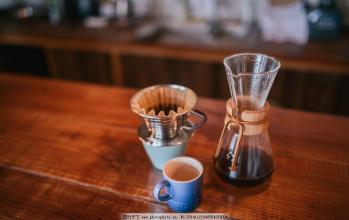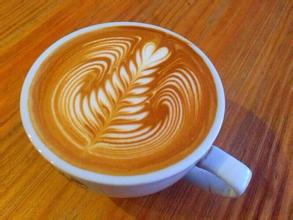Introduction to the producing areas of the characteristics of Grinding degree of Arabica medium-light roasted Coffee Flavor description treatment
The second burst is faster, and the coffee beans show an oily luster and become fragile, and at this stage, its ingredients begin to carbonize, resulting in charred properties. The smell of coffee can be smelled before the first burst. The first burst reflects the physical stretch of coffee and the chemical reactions of the compounds associated with it, such as the formation of water and the release of carbon dioxide. When the temperature reaches its peak, a second burst occurs, when the cellulose, matrix and coffee beans all begin to break.
The darker the robusta beans are baked, the more delicious they are; the darker the Arabica beans are baked, the more delicious and special they lose. On the other hand, medium baking can make their delicacies well displayed.
The automatic sorting machine separates high-quality coffee beans from many coffee beans, removes beans that are too light or too black, and applies very sophisticated production control techniques to reduce the percentage of unqualified coffee beans, including: ultraviolet fluorescence analyzer to identify moldy beans; trichromatic light drawing technology to produce color fingerprints (yellow-green, red and infrared) for each coffee bean
Arabica coffee has harsh planting conditions, weak disease resistance, high altitude requirements, slow growth, high quality, and fine processing of raw beans. Arabica coffee beans are elegant and slender in shape, with large and uniform grains. Different producing areas have their own different flavor and aroma, rich taste and different taste. It makes it the only coffee among these original species that can be drunk directly and alone, and can be used as a single product or as an Italian blend of coffee.
Robusta coffee has the advantages of strong adaptability, easy planting, fast growth and high yield. in general, the treatment of raw beans is relatively extensive and low quality (there is also a small amount of washed refined robusta). Robusta coffee has a round and rugged shape, relatively small grains, mixed beans, bright and strong flavor, mainly bitter taste, and has a bad rubber taste or mildew smell because of its low level of raw bean treatment. most Robusta beans are not suitable for drinking as a single coffee, and a few Robusta beans are used as Italian ingredients. The proportion is very low (but it does not rule out the fact that very few high-quality Robbosa beans can reach more than half of them). In general, robusta coffee is used in instant coffee (which extracts about twice as much liquid as Arabica), canned coffee, liquid coffee and other industrial coffees. Its caffeine content is much higher than that of Arabica, about 3.2%.
The author believes that Arabica coffee and Robusta coffee can not be directly compared, after all, they belong to different tree species, each has different opportunities to show their talents! Just like beef cattle and cows, which side of the milk quality can be compared? Which side of the beef is of good quality?

Important Notice :
前街咖啡 FrontStreet Coffee has moved to new addredd:
FrontStreet Coffee Address: 315,Donghua East Road,GuangZhou
Tel:020 38364473
- Prev

Introduction to the method of espresso, the method of extraction, the method of taste and drink
The practice of espresso introduces the practice of espresso. Use a bean grinder to grind the right amount of coffee powder. Note that the size of the powder should be adjusted. Usually this coffee uses the finest powder. Remove the coffee powder bowl from the espresso machine, wipe it clean, pour into the freshly ground coffee powder, take 7 grams of coffee powder, and pour into the filter of the espresso machine. 3. Using a smooth powder hammer at the bottom
- Next

Introduction to the grindability of Colombian coffee beans and Arabica coffee beans by flavor description treatment
Colombian boutique coffee beans introduce Colombian coffee varieties are mainly small grains of coffee. Plants are small trees or large shrubs, 5-8 m tall, usually much branched at base; old branches gray-white, nodes dilated, young branches glabrous, compressed. Leaves thinly leathery, ovate-lanceolate or lanceolate, 6-14 cm long and 3.5-5 cm wide, tip long acuminate, acuminate part 10-15 mm long, base cuneate
Related
- Beginners will see the "Coffee pull flower" guide!
- What is the difference between ice blog purified milk and ordinary milk coffee?
- Why is the Philippines the largest producer of crops in Liberia?
- For coffee extraction, should the fine powder be retained?
- How does extracted espresso fill pressed powder? How much strength does it take to press the powder?
- How to make jasmine cold extract coffee? Is the jasmine + latte good?
- Will this little toy really make the coffee taste better? How does Lily Drip affect coffee extraction?
- Will the action of slapping the filter cup also affect coffee extraction?
- What's the difference between powder-to-water ratio and powder-to-liquid ratio?
- What is the Ethiopian local species? What does it have to do with Heirloom native species?

